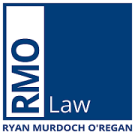If your Queensland Firearms Licence has been revoked, suspended or expired or even your Application has been rejected, you have the right to appeal that decision. We are Legal Experts at Understanding the Review Process The Queensland Civil and Administrative Tribunal...
News
Other News
Passing The Post-silly Season Test
As the silly season draws to a close quite a lot of people may be regretting having said something at the Christmas party or committing some other indiscretion as a result of imbibing the spirits of Christmas. Quite a few driver’s will be left with a more serious problem; a drink driving charge.
For many law abiding citizens the one brush they will ever have with the law is a charge of driving with a blood alcohol concentration above the legal limit. That “brush” might well be very confronting. If you have never been arrested and fingerprinted and put into a watch-house cell before you will probably find the whole experience very intimidating. It’s the one offence that doctors, lawyers, teachers and other professionals are most likely to find themselves in front of a Magistrate over.
This article provides tips on how to avoid getting into this sort of trouble and what to do if you find yourself blowing over the applicable limit.
Common Myths Busted
Firstly, forget all of those adverts you used to see on the TV about being able to have two units in the first hour and one unit per hour subsequently. Trying to stay just under the limit is fraught with difficulty and there are too many variables for such a plan to work. The “unit” system was dreamt up years ago when wine glasses were smaller and the percentage of alcohol in wine was lower. Your size and the condition of your liver will affect how quickly booze enters your bloodstream. The rule these days is don’t drink any booze and drive.
Lots of people get caught the morning after the night before. If you have consumed a significant quantity of alcohol the night before don’t get up and drive to work. Indeed, the night before you need to think about what time in the morning you are getting up to leave and allow sufficient time for the alcohol to clear from your system before getting behind the wheel. One rule of thumb is 12 hours between bottle and throttle, but even that won’t work if you drink a lot just before you stop as there may not be sufficient time for the liver to do its thing.
The Stance On Mouth Alcohol
Another thing to be mindful of is “mouth alcohol”. If you have a shot of whiskey and swill it around your mouth and spit it out then sit a breathalyser test you may well blow above the legal limit, even though there is barely any alcohol in your bloodstream and you aren’t affected by it. The high alcohol content in your mouth produces a higher reading. For that reason most police services will allow a period of time to pass if you have just finished one small drink minutes before getting in the car and getting pulled over.
If you think that the test must be wrong then you can politely request that a blood test be performed. Sometimes police say that they will just rely on the higher of the two readings but if your breathalyser test is over the limit and the blood test significantly lower then you might have a defence on the basis that the breathalyser test was flawed because of “mouth alcohol”.
What If You Fail The Test?
One word of advice is that in dealing with police it is sensible to be polite and do exactly as you are told. If you are rude to them they will write that down in the document that will be read out in court at your sentence. “The defendant was extremely polite and cooperative and showed genuine remorse” sounds a lot better than “The defendant was extremely rude and belligerent and repeatedly swore at attending police officers”.
The Law In Plain English
To the law; Queensland’s drink driving laws are contained within the Transport Operations (Road Use Management) Act 1995 (“TORUM”) as it is often abbreviated. The offences are mostly contained within Section 79 of TORUM. There are different limits for different sorts of driver so if you are on your L plates or your P plates (or indeed unlicensed) you must have 0% alcohol in your bloodstream and you will be charged if you have even very low readings so hyper vigilance is required. For most drivers on an open licence the “general” or low limit is .05% so the amount of alcohol in your blood stream must be below .05% (ie.049% or below). I have seen drivers charged with exactly .05%.
If the reading is between 0.05% and 0.1% you would be charged with an offence of driving between the general alcohol limit and the “middle” alcohol limit. This is often referred to as a “low range offence” fines and licence suspensions apply. Generally speaking the higher the reading the greater the penalty. So if you have a good traffic history and blow .051% you might get a one month licence suspension and a $300 fine. If your traffic history is bad and you blow .09% you are looking at maybe 6 months suspension and a $700 fine but its not that simple because the court takes a whole bunch of factors into consideration when deciding what penalty to impose.
The range of .01% to .15% is known as the mid range and more serious penalties apply. Above .15% is known as the high range and much more serious penalties apply. Precisely what penalties will apply is affected by section 86 of TORUM which provides for higher penalties in a wide range of circumstances. Most significantly if you have previous convictions for drink driving convictions in the past five years the penalties go up a lot. Automatic licence suspensions can apply for a year or two years depending on your circumstances. If you commit a second high range offence within five years actual imprisonment is a real possibility.
Essentially then the higher the reading the more serious the offence but other factors are also taken into consideration such as:
- the distance travelled (therefore the length of the journey and the number of people you posed a threat to,
- the road conditions, was it dark or raining and therefore more difficult to drive whilst intoxicated,
- whether there was anything in your manner of driving that brought you to the attention of police or whether you were simply pulled over for a RBT,
- whether there were passengers in the car that you also put at risk (especially children that didn’t have any choice as to whether they wanted to get in the car with an adult that had been driving),
- your traffic history, and
- your criminal history.
What Can You Do To Avoid A Harsh Penalty?
One way to reduce the likely penalty is to undertake one of the programmes that have been established to educate driver’s about the dangers of drink-driving and speeding. An example is the Queensland Traffic Offenders Programme (“QTOP”). Over three evening sessions driver’s learn about the ways in which the brain is affected by alcohol and other drugs and how statistically intoxicated driver’s are far more likely to be involved in accidents than dry drivers.
Often a relative of someone who has been killed or seriously injured comes along and explains the impact that this has had on the family. Many people over the years have told me that they found the course very useful and have suggested that all drivers should be required to undertake the course before they get a licence.
Magistrates seem to like people doing the course because there is a marked reduction in reoffending for people that have completed the course. That may be because the sort of people that are prepared to engage in the course are more likely to take the course seriously and to take on board what they are told than are those people that can’t be bothered to sit the course and pay the requisite fee. In any event completing the course tends to result in a shorter period of disqualification and a lower fine.
Prior Convictions?
There are also some quite complicated rules on what the prosecution has to do to be able to rely on previous convictions to trigger the higher penalties in section 86. They need to serve a “notice of intention to allege previous convictions” pursuant to section 47 of the Justices Act but again that’s probably a bit too much detail for this space.
Staying On The Road
In certain circumstances you may be able to apply for a restricted work licence that will enable you to drive between certain hours to get to and from work and for the purposes of work. You need to be able to demonstrate that you will suffer severe financial hardship as a result of losing your livelihood because you couldn’t work without your licence.
There are fairly strict criteria setting out who can and who can’t apply. If you are eligible to apply then affidavits need to be filed in support of your application and a Magistrate will hear and determine the application. You may be called upon to give evidence as the Magistrate has powers to ask you questions to determine whether you are a “fit and proper person” to be given the opportunity to continue driving on a restricted licence.
Conclusion
It can be dangerous to try to summarise the whole of the legislation and how the court processes work in a short article like this. It is always sensible to get some proper legal advice from our team who specialises in traffic law, before attending court. Sections 79 and 86 run to some 24 pages and there is a lot of case law that provides some guidance on the meaning of the various provisions.
I suppose what I would suggest everyone thinks about post-silly season is this.
Driving a car is just about the most dangerous thing any of us will do in our lives. Hurtling around at quite high speed in a metal box on four wheels is fraught with danger. Trying to do that when adversely affected by alcohol is a very stupid thing to do. You could kill yourself or worse someone else and have to deal with the guilt. The courts have to deal with the aftermath of such incidents. That is why the courts take such charges so seriously.
How We Can Help
Quinn & Scattini Lawyers are highly experienced with all ranges of drink driving offences. If you are not sure about how far you need to go to defend the charge, or need your licence for work, make sure you consult our experienced traffic lawyers who practises exclusively in this complex area of law.
Contact Us
Get the best representation. Contact Quinn & Scattini Lawyers on 1800 999 529, email mail@rmold.newwebsite.live, or submit an enquiry below.
We are available to meet with you at any of our local offices (Brisbane, Gold Coast, Beenleigh, Cleveland and Jimboomba) or by telephone or video-conference.
This article is for your information and interest only. It is not intended to be comprehensive, and it does not constitute and must not be relied on as legal advice. You must seek specific advice tailored to your circumstances.
Get in Touch

